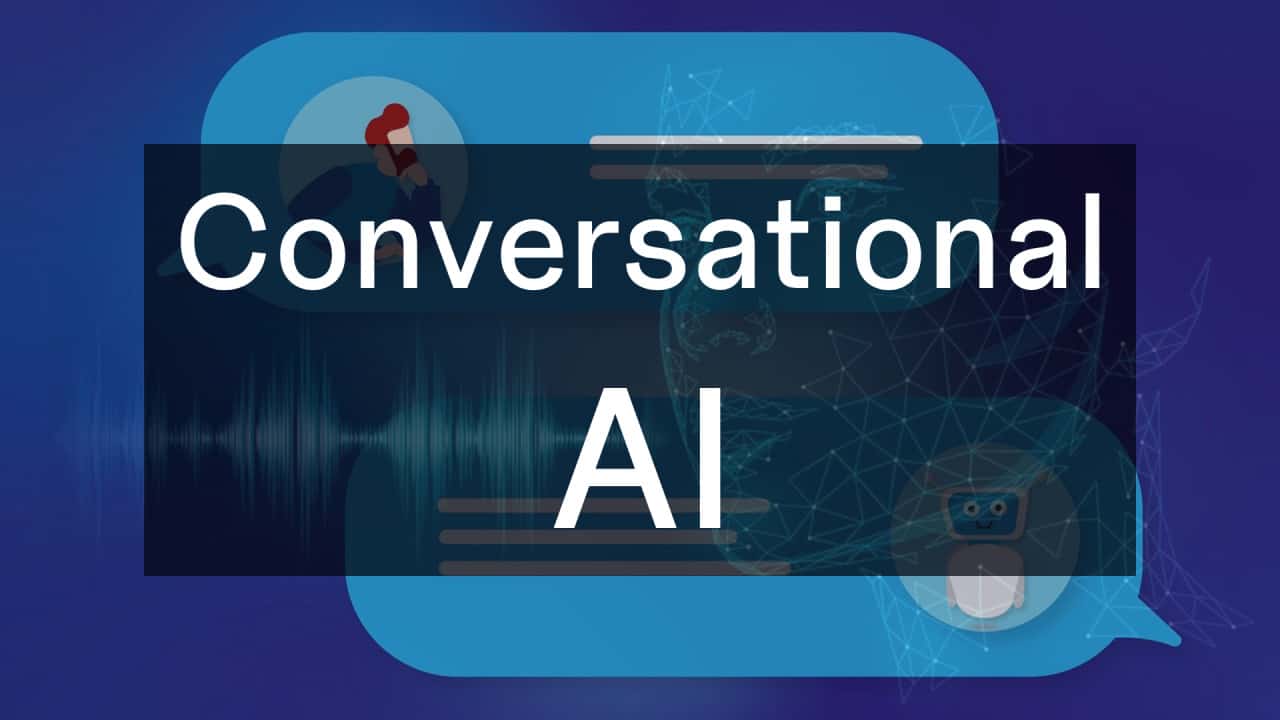Best 5 Benefits of Conversational AI For Businesses will be discussed in this article. Conversational AI is a sort of artificial intelligence that allows machines to have conversations with humans that are almost indistinguishable from human-to-human communication. The most common sort of conversational AI is chatbots and other types of virtual assistants, which are currently available on the majority of business websites.
How does Conversational AI work? Conversational AI has the ability to significantly increase your social media presence. It has the ability to increase your team’s efficiency and allow a bigger number of customers to get the service they seek in a more timely way. Continue reading to learn how a conversational AI tool may help your organization enhance its social customer service and social commerce.
Natural language processing (NLP) and machine learning (ML) technologies offer the fuel for this sort of artificial intelligence. According to reports, the worldwide market for conversational AI, which includes smart virtual assistants and chatbots, is predicted to reach over 14 billion USD by 2025, with a compound annual growth rate (CAGR) of 22% between 2020 and 2025.
Conversational artificial intelligence (AI) is swiftly becoming one of the world’s most popular technologies, mostly in the form of chatbots and virtual assistants. In this article, we’ll go into conversational AI in great depth and discuss some of the ways businesses might benefit from it.
What is Conversational AI?
Conversational artificial intelligence (AI) is a sort of technology that allows chatbots and virtual assistants to converse with humans in natural-sounding ways. Traditional chatbots could only react to a limited number of human queries, such as frequently asked questions and other predefined questions. Smart chatbots driven by conversational AI, as opposed to regular chatbots, can understand human queries and do research to offer relevant responses to almost all of the questions, mimicking human-to-human discussions. Conventional chatbots are incapable of comprehending human inquiries.
Natural language processing (NLP) and machine learning (ML), together with more traditional chatbot technology, are the two key technologies that allow virtual assistants and smart chatbots to initiate conversations and respond in the form of text, videos, and audio. NLP is the critical technology that enables AI chatbots and assistants to understand and analyze human speech. Machine learning is the technology that helps them respond accurately to human interactions and inquiries.
Using machine learning, these AI systems can constantly learn and gain information, allowing them to connect with people and readily reply to almost any query. Chatbots, according to some sources, are the most widespread use of artificial intelligence (AI) in businesses. Furthermore, it is expected that chatbot adoption rates would more than double in the next two to five years.
Best 5 Benefits of Conversational AI For Businesses
Now that we’ve covered the fundamentals, let’s look at the best five ways that conversational AI improves organizations.
Conversational AI is replacing chatbots
Conversational AI is replacing chatbots mostly because it is more successful at increasing consumer engagement and providing a better overall customer experience. Customers typically arrive with a slew of inquiries, especially if they are interacting with your firm for the first time. Because customer service centers aren’t always efficient, these inquiries are usually unanswered.
Chatbots powered by conversational AI may easily address these concerns by offering rapid solutions to practically all inquiries given by clients in substantially less time. Machine learning technology, which allows these AI-powered chatbots to learn new things on the fly, improves the effectiveness and accuracy with which they carry out human interactions.
As a result, businesses should employ conversational AI to improve consumer engagement and the entire customer experience. When customers do not have to wait for customer service specialists to respond, they have much less time to wait for their complaints and queries to be answered and resolved. As a result, both the probability of the lead becoming a customer and the likelihood of an existing customer becoming a valued partner are boosted.
Helps create user-friendly IoT devices
The present trend of acquiring Internet of Things (IoT)-powered devices has reached its apex, resulting in greater market competition to design goods that are as user-friendly as feasible. The introduction of conversational AI into these devices is a safe bet that corporations may make in order to build user-friendly goods.
The integration of conversational AI in Internet of Things devices makes it easier for consumers to give requests and for computers to understand and act on those instructions. The most visible example of this technology is the Google Assistant or Amazon Alexa that you use to send instructions to your many smart devices.
Conversational AI is at work anytime you give your smart home devices voice instructions like “Alexa, play this song,” “Alexa, order the best quality mangoes,” “Google, find my phone,” and so on. This technology improves device accessibility, making it easier for customers to use them and contributing to an overall increase in service quality.
Improves the availability of the service
Another appealing element of conversational AI for organizations is better service accessibility. Conversational artificial intelligence (AI), which may take the shape of chatbots and virtual assistants, makes it much easier for customers to navigate a website and get the services they need. Customers who are visually impaired or dyslexic may benefit from this technology since it allows them to easily communicate what they want to know and navigate the proper means of delivering the business’s services.
As a consequence, conversational AI makes your business more welcome to all sorts of clients, increasing the number of people who can use your goods and services and, as a result, boosting your income.
Will make the inventory more easily accessible
As previously said, conversational AI is powered by machine learning technology, which allows it to continually learn new topics and increase its knowledge base. By employing this conversational AI capacity, we can improve the accessibility and visibility of our products. This system will continually track inventory status and allow managers to identify items and understand their availability without having to go through lengthy inventory records.It will do this without the need to search for inventory items separately.
Inventory managers may easily start a conversation using this technology in order to identify particular commodities and learn anything else important to the inventory. since a result, inventory or warehouse accessibility is considerably enhanced, since persons with no prior expertise with computers will be able to identify the status of the inventory in less time and with less effort.
Reduces expenses and boosts return on investment
Investing in conversational AI systems will almost certainly result in considerable cost benefits for enterprises. In extreme cases, the use of conversational AI for the creation of solutions such as chatbots and intelligent virtual assistants may be rather expensive; nevertheless, the ROI (return on investment) is definite. Also Read Top 10 ChatGPT Alternatives You Can Try In 2023
Businesses may save money and time by reducing the number of extra executives they need to hire to react to consumer queries. Furthermore, it may increase the return on investment (ROI) for organizations by providing sufficient and timely responses to every client problem, increasing customer satisfaction and retention rates, and eventually leading to higher sales.
Conclusion:
Due to the many advantages it provides, Conversational Artificial Intelligence (AI) has grown to be a valuable tool for enterprises. The introduction of this technology into IoT-powered items has made it easier for users of all abilities, whether they are visually impaired, deaf, or normal, to take control of such devices. This technology has enabled enterprises in a wide range of applications to greatly improve the quality of their customer experiences as well as the services they provide. Also Read What Is An Ai Image Generator Complete Guide
The primary applications of this great technology include virtual assistants and chatbots, to mention a few. More work is presently being done, and I expect that this technology will be capable of fulfilling more duties in the next years.




